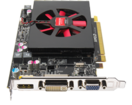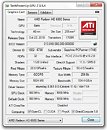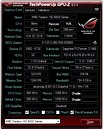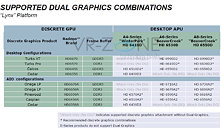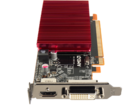
Orbis Implements Multi-GPU, Too
Sony's next-generation PlayStation, reportedly codenamed "Orbis", is known to be powered by an AMD x86-64 CPU with graphics based on its Southern Islands architecture, from the older report. We're now hearing that Sony may implement a multi-GPU solution of its own. According to an IGN.com report, the CPU in question will be a custom-version of AMD's A8-3850 quad-core APU. This should serve as indication that the processor cores will be based on AMD's K10 Stars architecture, rather than K15 Bulldozer/Piledriver.
The GPU, on the other hand, will be based on the "Southern Islands" architecture, and the IGN.com report pin points it to resemble Radeon HD 7670. The HD 7670 is a re-branded HD 6670, which is based on the 40 nm "Turks" GPU. Turks uses neither Graphics CoreNext nor VLIW4, but the older VLIW5 number-crunching machinery. The most interesting piece of information here is talk of a multi-GPU configuration between this Turks-based GPU, and the GPU that's embedded into the "Llano" APU. We know that the graphics core embedded into AMD A8-3850, the Radeon HD 6550D, can work in tandem with Radeon HD 6670 to yield an AMD Hybrid CrossFireX configuration called "Radeon HD 6690D2". This could be end up being Sony's graphics weapon of choice.
The GPU, on the other hand, will be based on the "Southern Islands" architecture, and the IGN.com report pin points it to resemble Radeon HD 7670. The HD 7670 is a re-branded HD 6670, which is based on the 40 nm "Turks" GPU. Turks uses neither Graphics CoreNext nor VLIW4, but the older VLIW5 number-crunching machinery. The most interesting piece of information here is talk of a multi-GPU configuration between this Turks-based GPU, and the GPU that's embedded into the "Llano" APU. We know that the graphics core embedded into AMD A8-3850, the Radeon HD 6550D, can work in tandem with Radeon HD 6670 to yield an AMD Hybrid CrossFireX configuration called "Radeon HD 6690D2". This could be end up being Sony's graphics weapon of choice.


